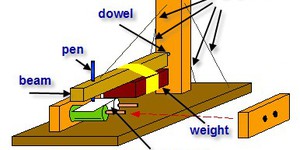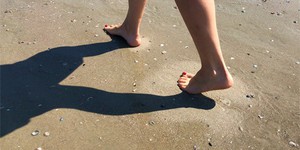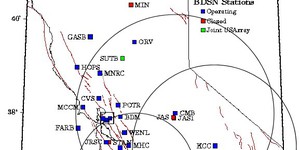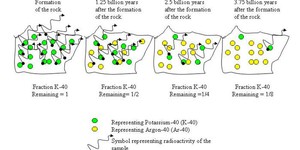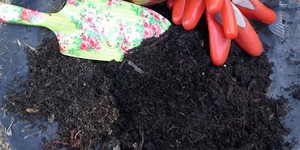High School, Geology Science Projects (23 results)
Geologists study the Earth, trying to understand the forces that gradually shape and change the landscape and ocean floor, as well as forces that make themselves felt more suddenly, like earthquakes and volcanoes. The information geologist discover helps in many ways, from keeping populations safe from disasters like landslides to uncovering important ore deposits like titanium used for surgical equipment.
|
Select a resource
Sort by
|
The papier-mâché volcano is a real classic, but there are many other ways to make an even more exciting and interesting science project focused on volcanoes!
To get started on your own volcano-based science project, you will want to first have an understanding of how volcanoes form. This is related to tectonic plates. The entire outer shell of the Earth, known as the lithosphere, is made up of tectonic plates that are constantly moving. There are seven or eight large tectonic…
Read more
Featured
Have you heard that garlic powder is supposed to inhibit the growth of bacteria? Which do you think would make a better disinfectant: a solution of garlic powder or a solution of bleach? This project shows you a straightforward way to compare the effectiveness of different disinfectants (or other antimicrobial agents), by measuring zones of inhibition on a culture plate.
Read more
If you live in an area where earthquakes happen, you might be especially interested in this science project. You will learn how to build your own seismograph and how to use it to detect ground motion.
Read more
New
Engineers are trying to tackle the world's ocean pollution problem using robots. Some robots, like Mr. Trash Wheel and the ship featured in this Mark Rober video, are stationary and collect trash as it flows out of rivers before it gets into the ocean. Others, like the Jellyfishbot, are mobile and can squeeze into narrower spaces to collect trash:
Can you build and test your own trash-skimming robot? If you do not have access to a natural body of water to test it in, you can use a bathtub or a…
Read more
Did you ever notice the cool patterns around your footprints when you take a walk in the wet sand at the beach? The pressure of your feet has effects far outside your footprints. Here's a project that uses a simple experimental apparatus to investigate how the volume of wet sand changes under pressure.
Read more
When an earthquake happens, how are scientists able to determine the original location of the quake? In this project, you'll use archived data from a network of seismometers to find out for yourself. You'll create your own seismograms from the comfort of your own computer with an easy-to-use webpage interface. Then you'll analyze your seismograms to determine the distance of the quake from each seismometer station. By mapping your analyzed data, you will be able to determine the location of the…
Read more
How is geology important for our energy resources? Coal, oil, and natural gas are formed by geological processes over millions of years. Certain geological formations can indicate a reservoir of coal, oil, or natural gas. Also, geothermal processes can be used as an energy resource. How are these formations identified? How are the resources extracted? You can use the National Geospatial Program to access, view, and download information from geospatial databases containing a broad spectrum…
Read more
New
If someone asks you to draw a picture of a doctor, lawyer, or engineer, what first pops into your mind? The race and gender of the person you imagine might be shaped by your personal life experiences, such as whether you have family members in those professions, or what representations of them you have seen on TV or online. What do you think will happen if you ask an artificial intelligence (AI) program to generate the picture instead? Will pictures generated by AI reflect the true real-world…
Read more
What do rocks and clocks have in common? Both keep track of time.
Yes, radioactive isotopes present in rocks and other ancient material decay atom by atom at a steady rate, much as clocks tick time away. Geologists use those radioactive isotopes to date volcanic ash or granite formations like the giant Half Dome in Yosemite National Park. Anthropologists, archeologists, and paleontologists also use radioactive isotopes to date mummies, pottery, and dinosaur fossils. Does this sound abstract…
Read more
Is soil structure an important factor in earthquake dynamics? Investigate soil liquefaction and how different soil types respond to earthquake movements. Are movements more dramatic in sandy/loamy or clay type soils? Which soil structures are most stable? Which are the most volatile? (MCEER, 2005)
Read more
You can study hazards that affect coastal areas. What geological forces cause a tsunami? A tsunami (Japanese for 'harbor wave') is a wave generated by an undersea earthquake, landslip, or volcanic eruption. You can demonstrate what causes a tsunami by simulating an undersea earthquake with a water table. How does the depth of water effect the height of the wave? Do different slopes of bottom change the speed of the wave? Visit the USGS Coastal and Marine Geology Program to find out about…
Read more
Make your own fertile soil using kitchen scraps, manure, leaves, grass clippings, and other compostable materials. Which materials make the best compost? How does the amount of nitrogen change the rate at which the compost forms? How does a 'hot' compost pile compare to a 'cold' compost pile, or how does traditional composting compare to worm composting, or vermiculture?
Figure 1. Different composting methods yield different soils. In this picture, the soil on the…
Read more
What is geomagnetism, and how does it affect the earth? Visit the USGS Geomagnetism program for more information about this invisible force (USGS, 2006). How is the earth's magnetic field patterned? Are the magnetic poles located at the exact North and South Pole? How can the fields be mapped on the Earth's surface? What is declination? Use the mapping tools to study changes in declination patterns over time. (USGS, 2006)
Read more
|
Explore Our Science Videos
How to Measure Light with Google's Science Journal App
Candy Diffusion Art
Make A Tissue Paper Parachute - STEM Activity



